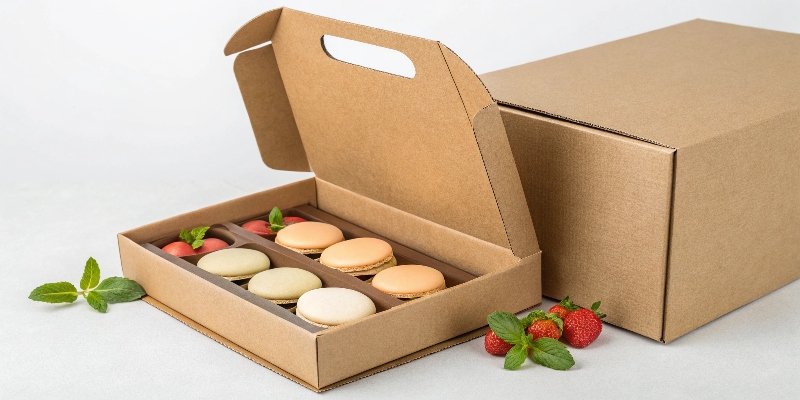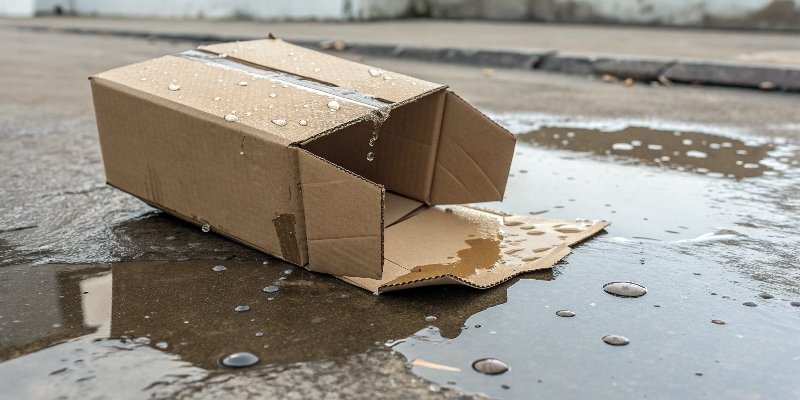Choosing packaging is tough. The wrong material hurts your budget and brand. Cartons offer a versatile, cost-effective, and protective solution many businesses trust.
The primary benefits of using cartons are their versatility, cost-effectiveness, and recyclability. They are lightweight, which reduces shipping costs, and highly customizable, allowing for strong branding. Their protective qualities also ensure products arrive safely.

I've been in the packaging industry for over 16 years, and I've seen cartons transform how businesses present their products. They are more than just a box; they are a critical part of your brand's success. But to really understand their value, we need to look closer at what makes them so essential. Let's break down the specific benefits and considerations.
What are the benefits of carton packaging?
Worried your packaging isn't doing enough for your brand or budget? Carton packaging delivers a powerful combination of protection, brand enhancement, and cost-saving efficiency.
Carton packaging provides excellent product protection1, is lightweight2, and is highly customizable3 for branding4. Its biggest benefits are its low cost, sustainability5 through recyclability6, and versatility7 for almost any product type.

Over my career, I've worked with hundreds of product designers like Peter. A common challenge is balancing a premium feel with a tight budget. This is where cartons truly shine. They offer a fantastic canvas for creativity without the high costs of other materials. You can achieve a high-end look through simple techniques like special finishes or clever structural design. Beyond aesthetics, cartons are champions of efficiency. They are typically shipped flat to the factory, which dramatically reduces warehousing and shipping costs. This combination of design flexibility8 and logistical savings9 makes cartons a go-to choice for so many industries. It solves major headaches for both the marketing and operations teams.
| Benefit Category | Specific Advantage for Designers |
|---|---|
| Cost & Efficiency | Lower material cost, reduced shipping weight, saves storage space (ships flat). |
| Branding & Marketing | Excellent print surface for graphics, easily customizable shapes and sizes. |
| Sustainability | Made from renewable resources, widely recyclable, biodegradable options available. |
What is a carton used for in packaging?
Unsure what type of packaging your product needs? Using the wrong material risks damage and makes your product look unprofessional. A carton is the primary choice for protecting and presenting goods.
A carton is a box made from paperboard, most commonly used as primary packaging. It directly contains the product, providing protection, a surface for branding4 and information, and a structure for retail display.

I often remind designers that the carton is usually the first physical interaction a customer has with a product. It’s not just a container; it's the start of the customer experience10. We see them everywhere, from the folding carton holding your morning cereal to the luxurious rigid box for a new smartphone. A carton’s main job is to serve as the product's immediate enclosure, what we call "primary packaging11." It protects the item from scrapes and minor impacts. It also carries all the essential information, like ingredients or instructions, right on its surface. The type of paperboard, its thickness, and the structural design we choose all depend on the product's weight, how fragile it is, and the unboxing feel we want to create.
Primary vs. Secondary Packaging
A carton's role can vary. Primary packaging is the box the consumer buys. Secondary packaging is the larger box used to ship multiple units to a retailer. Cartons excel at both.
| Carton Type | Primary Function | Common Industry |
|---|---|---|
| Folding Carton | Primary packaging for lightweight2 items. | Food, Cosmetics, Pharma |
| Rigid Box | Primary packaging for luxury goods. | Electronics, High-end Gifts |
| Corrugated Box | Secondary packaging for shipping. | E-commerce, Logistics |
What are the disadvantages of a product packaged in a carton?
Thinking cartons are always the perfect choice? Overlooking their limitations can lead to damaged products. Let's discuss the potential downsides to ensure you choose wisely.
The main disadvantages of cartons include their vulnerability to moisture, which can weaken the structure. They offer less protection against crushing force than plastic or metal and are not ideal for very heavy items without reinforcement.

As a packaging professional, it's my job to be honest about the limits of materials. I've seen projects get into trouble because they didn't consider factors like high humidity during long-distance shipping. A standard paperboard carton can absorb moisture and lose its structural strength. It’s also important to remember that paperboard isn’t indestructible. It won't protect a product from a heavy impact or severe crushing force in the way a hard plastic case could. But this is where smart design comes in. These weaknesses are not deal-breakers; they are design challenges to be solved. By anticipating these issues, we can select the right materials and design features to create a carton that performs perfectly.
Structural and Environmental Limitations
The key is to proactively address these potential issues in the design phase.
| Disadvantage | Design Solution |
|---|---|
| Moisture Vulnerability | Use a coated paperboard or add a protective laminate finish. |
| Low Crush Resistance | Use a thicker grade of paperboard or design internal support inserts. |
| Unsuitable for Heavy Items | Use a multi-layered corrugated material or pair it with other materials. |
What are the three key benefits of packaging in general?
Think packaging is just a box? You're missing major opportunities for branding and sales. Great packaging actually serves three core functions: protection, communication, and utility.
The three fundamental benefits of any packaging are protection, communication, and utility. Protection ensures the product arrives safely. Communication conveys brand identity. Utility makes the product easy to use, store, or open.

After more than a decade in this business, I can tell you that the most successful packaging designs master all three of these areas. It's not enough for a box to just hold something. We have to ask more questions. Does it truly protect the product on its journey from our factory to the customer's hands? A well-structured carton with the right inserts does. Does it tell the customer who you are and what your brand stands for at a single glance? A beautifully printed carton with a unique feel does. And finally, does it make the customer's life easier? A carton with a simple tear-strip or a shape that's easy to store does. When designers balance these three elements, they create packaging that becomes a memorable part of the product experience itself.
| Core Benefit | How Cartons Deliver |
|---|---|
| 1. Protection | Corrugated structures and engineered inserts absorb shock and prevent damage. |
| 2. Communication | The high-quality print surface allows for vivid graphics, branding4, and text. |
| 3. Utility | Can be designed with features like easy-open tabs, resealable closures, or dispenser functions. |
Conclusion
In short, cartons are a powerful tool. They offer a flexible, cost-effective, and brandable solution, but understanding their limitations is key to using them successfully for your product.
-
Understand the key strategies for ensuring product safety during shipping and handling. ↩
-
Find out how lightweight packaging can reduce shipping costs and improve efficiency. ↩ ↩
-
See how customization in packaging can strengthen brand identity and customer engagement. ↩
-
Learn how effective packaging can communicate brand values and attract customers. ↩ ↩ ↩
-
Explore the advantages of adopting sustainable practices in packaging design. ↩
-
Discover the environmental benefits of using recyclable packaging materials. ↩
-
Explore how versatility in packaging can enhance product appeal and functionality. ↩
-
Explore how flexible design can lead to innovative and effective packaging. ↩
-
Understand how efficient packaging can lead to significant cost savings in logistics. ↩
-
Discover the impact of packaging design on customer satisfaction and brand perception. ↩
-
Learn about the role of primary packaging in product presentation and protection. ↩






